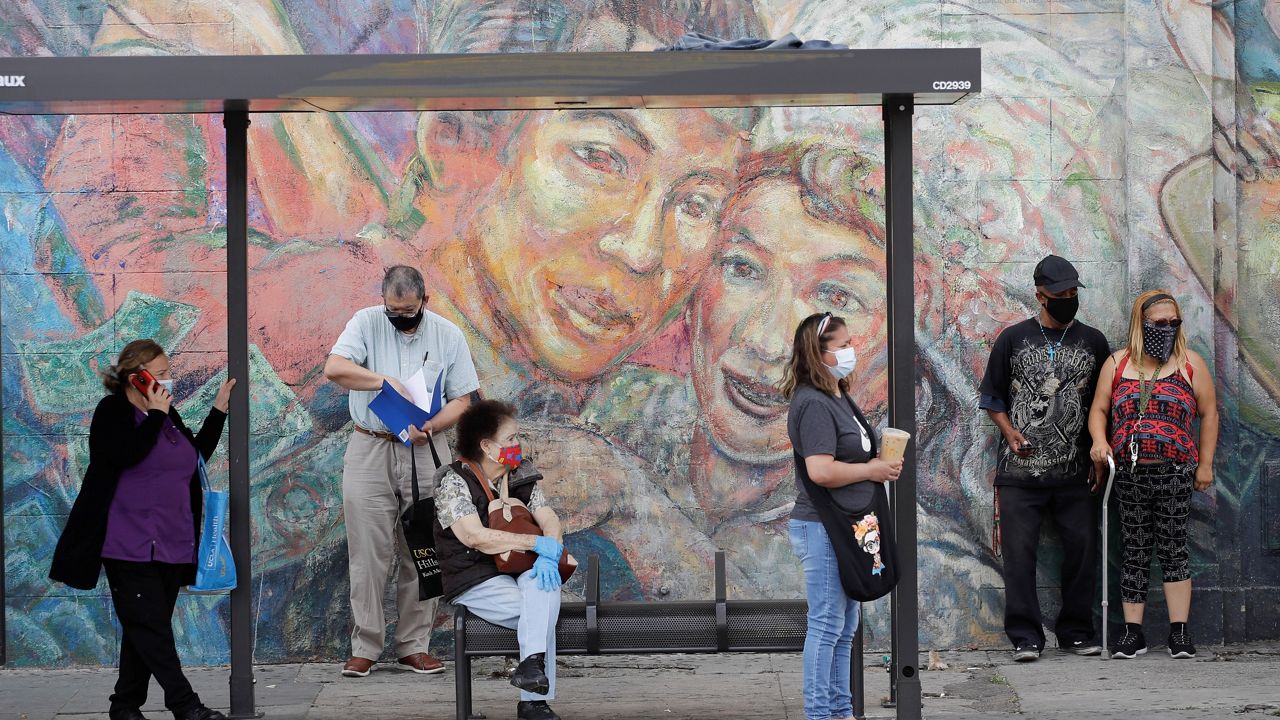LOS ANGELES (CNS) — The Los Angeles City Council approved a contract for the city's Street Transit Amenities Program Tuesday that aims to install 3,000 transit-stop shelters and 450 additional shade structures across the city.
What You Need To Know
- The shelters would also include digital signage indicating arrival times for buses
- The 10-year agreement also calls for plans to have digital advertisements on 700 of the structures
- The council instructed the Bureau of Street Services to report on the status of the program on a monthly basis and to develop an implementation plan to ensure no district is left behind
- Councilwoman Monica Rodriguez, who dissented, said the contract contained a lot of uncertainties, including lack of a funding commitment and signs of promises that would go unfulfilled
The council voted 12-1 to approve Tranzito-Vector as the contractor to install, upgrade and maintain transit shelters. The shelters would also include digital signage indicating arrival times for buses. The 10-year agreement also calls for plans to have digital advertisements on 700 of the structures.
"We're seeing this in all sorts of other cities," said Councilman Bob Blumenfield, who chairs the council's Public Works Committee. "We're behind the curve on this. We're in LA. We need to be in front of this."
Of the 1,884 transit shelters in Los Angeles, one-third are over 30 years old, half are over 10 years old and 96% are over a decade old, according to a presentation by the Bureau of Street Services.
"I really do think it's embarrassing that the city can't provide the most basic infrastructure like bus shelters," Council President Nury Martinez said.
STAP is a new city program for sidewalk and transit amenities, replacing the Coordinated Street Furniture Program, which is expiring at the end of the year.
The program's goal is to ensure that 75% of bus riders in each council district will have access to bus shelters. It will prioritize installing new shelters in areas that have high ridership and are more exposed to heat. Other considerations include Metro's Equity Focus Communities and bus routes that have longer wait times.
Digital advertisements will be placed in areas "appropriate for land use and zoning" such as residential areas, scenic corridors and special planning areas, according to the Bureau of Street Services.
The council separately voted to approve an ordinance allowing certain outdoor advertising structures to be placed on city streets.
Councilman Mike Bonin voted for the contract despite his opposition to public advertisements, noting that "in a balance between my distaste for digital advertising and my desire to make sure we provide for bus riders, that's an easy choice to make today." He cited statistics indicating that 70% of Metro riders are low-income, the median income of riders is $19,000 and 84% of Metro riders don't own a car.
Four neighborhood councils opposed the contract proposal. Six neighborhood councils opposed the ordinance while five were in support, with an additional four supporting it only if amended and one neutral.
Opponents of the council's decision claimed that more digital ads will lead to distracted driving and pointed to privacy concerns with digital structures collecting cell phone data.
Data collection will be restricted to information that isn't personally identifiable and used to improve the delivery of city services, according to the Bureau of Street Services. None of the data will be made available to third parties without approval from the city, according to the bureau.
The council voted to set aside $1 million this year for the program, but the Bureau of Street Services is finalizing $30 million in funding through a trust fund and hopes to receive additional funding through grants, according to Shirly Lau, the department's assistant director.
Councilwoman Monica Rodriguez, who dissented, said the contract contained a lot of uncertainties, including lack of a funding commitment and signs of promises that would go unfulfilled.
The council instructed the Bureau of Street Services to report on the status of the program on a monthly basis and to develop an implementation plan to ensure no district is left behind.
Blumenfield noted that the contract set the target number of shelters as a goal and not a requirement because the city is taking on additional risk by front-funding the manufacturing and installation of the shelters.
Over 60% of the shared program revenue will go to the city, which will own the shelters and the intellectual property involved in the design.
"This will lead to more accountability, something that we haven't had for many years," Blumenfield said.
Lillibeth Navarro, founder and executive director of CALIF, an independent living center in Los Angeles, told the council that people with disabilities will benefit from more transit shelters.
"Bus stops are a welcome shade in the middle of the urban desert jungle," she said. "Since our cities are often devoid of trees or restful stops, bus stops definitely provide the needed oasis for a more comfortable trek from point A to point B."



